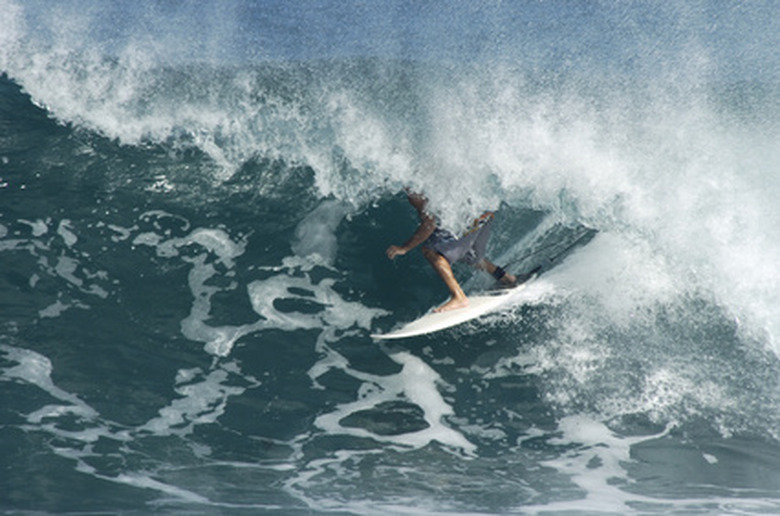What Is The Electrical Power Source In Hawaii?
The group of islands that constitute the state of Hawaii sits atop some of the highest volcanic mountains in the world, and particularly in the case of the big island of Hawaii, the landmasses are still being formed by volcanic activity.
The islands are too young to have coal or oil deposits, and since it became a state in 1959 – and even before – Hawaii has depended on imported coal and petroleum to fuel electric plants.
With the adoption of the Hawaii Clean Energy Initiative (HCEI) in 2008, in partnership with the U.S. Department of Energy, the state began shifting its energy dependence toward renewable resources.
The state legislature made a bold move in 2015 by committing to generate 100 percent of its electricity from renewable resources by 2045. Since that decision, the percentage of Hawaii's electricity generated by fossil fuels has been declining.
Petroleum and Coal
Petroleum and Coal
In 2018, Hawaii had two crude oil refineries located in the Honolulu port area of the island of Oahu, but the U.S. Energy Information Administration (EIA) reported in 2017 that one was about to cease operations and sell its equipment to the other refinery.
According to the EIA, the crude came from Russia and other Pacific Rim suppliers, as well as from Africa and the Middle East. For the two decades prior to 2014, petroleum supplied three-quarters of Hawaii's electricity, but by 2017, that fraction had fallen to two-thirds.
Hawaii has only one coal-fired electric plant, located on the island of Oahu, and it produces about 180 megawatts a year, which represented about one-seventh of Hawaii's electrical consumption in 2017. Hawaiian Electric Company (HECO) supplies power to each of the main islands except Kauai, which has an electric cooperative. Each island has its own power grid and must generate its own electricity.
The Waves of the Future
The Waves of the Future
Hawaii doesn't have any coal or oil of its own, but it does have significant natural resources, including some that aren't available elsewhere. It's one of only seven states with a utility-grade geothermal plant, which is located on Kilauea Volcano on the Big Island. It supplied almost one-quarter of the island's electricity, but it had to be shut down in 2018 when the volcano erupted and is expected to re-open in 2020.
Studies have also shown that wave energy in the ocean that surrounds the islands has the potential to generate a significant amount of energy. In addition, thermal currents in the ocean water can also be harnessed for electricity. Deep, cooler currents can also be drawn to the surface to provide cooling for nearby communities, thus reducing the need for air conditioning.
Visible Light Uses, Wind and Water
Visible Light Uses, Wind and Water
Hawaii's largest solar farm went online in 2017, generating 28 megawatts and effectively doubling the amount of solar electricity available on the islands. In addition, about half the households in the state (220,000 households), had solar panels installed in 2018, and state building codes require all new homes to have solar water heaters.
Solar panels convert visible light energy from the sun, as well as ultraviolet light, into electricity by virtue of the photovoltaic effect. In addition, Hawaii has over 120 wind turbines that convert its abundant onshore and offshore wind resources into 200 megawatts of electricity. In rural parts of the state, biomass such as sugarcane is converted into electricity.
Owing to its relatively small waterways, Hawaii doesn't generate much hydroelectric power, but a new hydroelectric plant came online on Kauai in 2019 to supply 6 megawatts annually. The Kauai Island Utility Cooperative is planning to integrate hydroelectric and solar generating stations to supply supplemental nighttime peak energy demands in the near future.
Cite This Article
MLA
Deziel, Chris. "What Is The Electrical Power Source In Hawaii?" sciencing.com, https://www.sciencing.com/electrical-power-source-hawaii-7446536/. 5 November 2019.
APA
Deziel, Chris. (2019, November 5). What Is The Electrical Power Source In Hawaii?. sciencing.com. Retrieved from https://www.sciencing.com/electrical-power-source-hawaii-7446536/
Chicago
Deziel, Chris. What Is The Electrical Power Source In Hawaii? last modified March 24, 2022. https://www.sciencing.com/electrical-power-source-hawaii-7446536/
